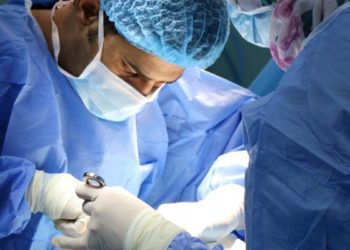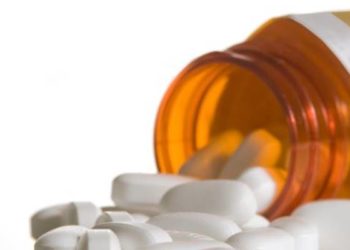Similar recovery course noted for both sports and non-sport-related concussion in children
1. Symptom recovery trajectories in children aged 5 to 12 years of age suffering from sport-related concussions (SRCs) and non-sport-related concussions (non-SRCs) were similar, with no significant differences in recovery curves across time postinjury.
Evidence Rating Level: 2 (Good)
Study Rundown: A huge proportion of concussions in young children are associated with sports and recreational activities, which presents a topic of special significance given the fact that the developing brain may be particularly vulnerable to injury. However, previous studies of concussions in children have focused exclusively on SRCs or has combined population samples of children and adolescents rather than focusing on younger children aged 5 to 12 years. This cohort study therefore sought to investigate the similarity in symptom recovery trajectories in children aged 5 to 12 years suffering from SRCs or non-SRCs. In this prospective, multicentre cohort study, 1747 children from 9 pediatric emergency departments in Canada were included and classified as having an SRC or non-SRC if their mechanism of injury occurred outside of a sport setting, such as due to a fall during a recreational activity. The overall cohort was further split into two subcohorts of children aged 5 to 7 and 8 to 12 years of age. Symptoms were assessed via the post-concussion symptom inventory (PCSI) at 1, 2, 4, 8 and 12 weeks post-injury. There were no significant differences in recovery trajectories across time post-injury observed between children in the SRC group and children in the non-SRC group. There was no association between sport classification, such as whether the sport was a contact, limited contact or collision sport, and symptom change across time. Between the SRC and non-SRC groups, the percentage of children with persisting symptoms after concussion (PSAC) was similar across time. Overall, this study found that the symptom recovery trajectories in children aged 5 to 12 years of age with SRCs and non-SRCs were similar, with no observed significant differences in recovery curves across time postinjury.
Click to read the study in JAMA Network Open
Relevant Reading: Child Development and Pediatric Sport and Recreational Injuries by Age
In-Depth [multicentre cohort study]: Pediatric concussion remains an important topic of investigation due to its high prevalence and possible longterm consequences. However, there remains a paucity of research surrounding children in the 5 to 12 age group. Further, while the most common cause of concussions in children older than 6 is due to sports, previous studies of concussions in children have often focused exclusively on SRCs and have neglected non-SRCs. This cohort study therefore sought to investigate the similarity in symptom recovery trajectories in children aged 5 to 12 years suffering from SRCs or non-SRCs. Between 2013 and 2015, 1747 children from the Pediatric Emergency Research Canada (PERC) network with SRC or non-SRC were included. Children were classified with SRC if they sustained their concussion while playing a sport of any kind, including recess sports or recreational sports, while children were classified with non-SRC if their concussion occurred outside of a sport, such as due to a motor vehicle accident. The primary outcome was symptom change, defined as the difference between the current rating and preinjury ratings across 1, 2, 4, 8 and 12-week follow-ups as measured by the PCSI. The secondary outcome was PSAC, defined as the presence of 3 or more new or worsening symptoms since the onset of concussion. Among the 1747 children, 513 were aged 5 to 7 (mean [SD] age, 6.57 [0.85] years; 320 male [62.4%]) and 1234 children were aged 8 to 12 years (mean [SD] age, 10.68 [1.40] years; 806 male [65.3%]). No significant differences were observed in recovery trajectories across time postinjury between children in the SRC group and the non-SRC group (5-7 years: β = −0.09; 95% CI, −1.10 to 0.92; 8-12 years: β = 0.11; 95%CI, −1.50 to 1.70). The percentage of patients with PSAC was similar across time for both age groups in the SRC group and the non-SRC group.
Image: PD
©2024 2 Minute Medicine, Inc. All rights reserved. No works may be reproduced without expressed written consent from 2 Minute Medicine, Inc. Inquire about licensing here. No article should be construed as medical advice and is not intended as such by the authors or by 2 Minute Medicine, Inc.






